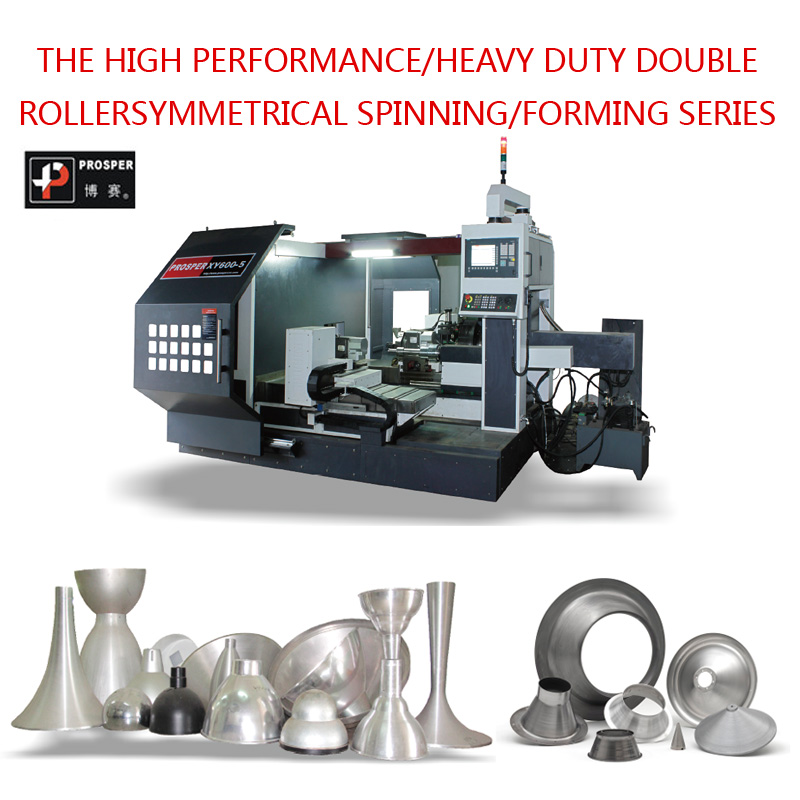
Metal spinning gives shops a broad palette of options that can be customized for the job at hand.
Without metal spinning, motorcycle parts and car wheels wouldn't be so easy to make. Neither would gas bottles, cooking pots and pans, or myriad components in the defense and aerospace industries.
The process fundamentals are simple. A round blank, flat or preformed is fixtured in a spinning lathe. As the blank spins, a roller tool forms it, usually pressing the blank against a mandrel, compressing the grain structure, and producing a smooth surface that often doesn't require secondary finishing.
Its applications dispel two basic misconceptions: first, that metal spinning is a manual process requiring highly skilled labor; second, that spinning is only for low-volume work. The process in fact encompasses a full range of volumes and job requirements. Manual metal spinning, in which a highly skilled operator carefully pulls a roller to shape the metal, is still common in many spinning shops, and the age-old technology makes business sense for extremely low-volume or prototype work. Power metal spinning can be cost-effective for both one-off parts as well as high-volume automated jobs, such as the mechanized setups for car wheels. For the right application, pick-and-place robots allow a spinning lathe to run lights-out, unattended.
The reality is that metal spinning gives shops a broad palette of options that can be customized for the job at hand.

Machinery
The oldest spinning systems consisted of a lathe with a spinning roller that, using leverage, was manually pressed against the workpiece to shape it, usually against a mandrel (though simple shapes could be formed without one). Skilled craftspeople have spun metal like this since antiquity and have perfected the technique through the ages.
The equipment is simple and inexpensive, and if a company has skilled technicians in-house, manual spinning can give a shop significant competitive advantage, particularly for extremely low-volume and prototype work. The downside is it is difficult to find labor skilled enough for the job. Few, if any, technical schools teach the metal spinning process, so most people learn on the job—and there can be a steep learning curve.
A metal spinning operator makes minute adjustments depending on the look of the metal and the sound he hears. If the finish looks unchanged, the operator knows the workpiece has stopped compressing and it may be time to anneal (see "Materials and Tooling" section). Likewise, if the machine's soft whir changes to a higher pitch, he knows that the material is probably getting harder.
CNC spinning machines reduce the need for skilled labor. A disk blank or preform is clamped against a chuck by the machine tailstock and rotated by the drive motor. The roller, on a two-axis compound slide, is programmed to make a series of sweeping motions to form the metal progressively onto the mandrel, behind the chuck. Specialty spinning machines with multiple roll tools also are available for forming wheels and similar parts.
Because these machines have the same fundamental characteristics as conventional turning lathes, they can change tools to perform secondary operations, such as machining or coining, edge trimming, beading, planishing, and flanging. For instance, products like bearing cages can be rough-formed with the spinning tool, then machined with a turning tool, all in one setup. Also, these systems offer gap and pressure control so operators can infer material thickness and hardness during operation.
The CNC can be programmed using a "playback" method in which the technician manually performs the operation once with a joystick or potentiometer, and the machine control stores the movements. Programs also may be input directly onto the CNC's graphical display or by using offline programming software.
created by PROSPER CNC SPINNING





